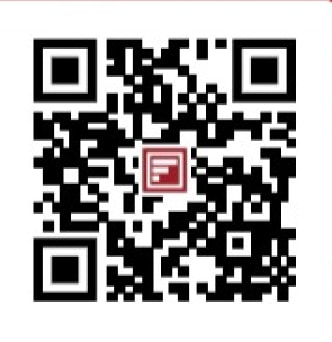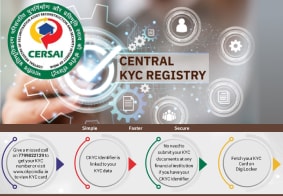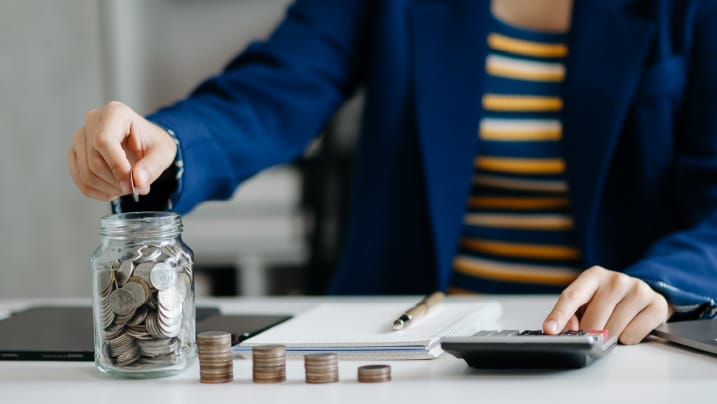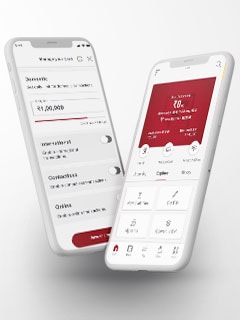CKYC Registry
-
Customer Service Contact us Service request Locate a branch
Find all the help you need
Scan the QR, get our app, and find help on your fingertips

Help CenterSupport topics, Contact us, FAQs and more
-
Login
Are you ready for an upgrade?
Login to the new experience with best features and services
-
Login
Are you ready for an upgrade?
Login to the new experience with best features and services
- Accounts
-
Deposits
IDFC FIRST Bank Deposits
View all Deposits -
Loans
IDFC FIRST Bank Loans
View all Loans - Wealth & Insure
-
Payments
IDFC FIRST Bank Payments
View all Payments -
Cards
IDFC FIRST Bank Cards
View all Cards - Blogs
- Corporate Account
-
Cash Management Services
IDFC FIRST Bank Cash Management Services
View all Cash Management Services - Supply Chain Finance
-
Corporate Lending
IDFC FIRST Bank Lending
View all -
Treasury
IDFC FIRST Bank Treasury
See more details - NBFC Financing
Support topics, Contact us, FAQs and more
- IDFC FIRST Bank Accounts
-
Savings Account
-
Corporate Salary
Account -
Senior Citizens
Savings Account -
First Power
Account -
Current Account
-
NRI Savings
Account -
TASC Institutional
Account -
Savings Account
Interest Calculator
- IDFC FIRST Bank Deposits
-
Fixed Deposit
-
Recurring Deposit
-
NRI Fixed Deposit
-
Safe Deposit Locker
-
FD Calculator
-
RD Calculator
- IDFC FIRST Bank Loans
-
Personal Loan
-
Consumer Durable
Loan -
Home Loan
-
Business Loan
-
Professional Loan
-
Education Loan
-
New Car Loan
-
Pre-owned Car Loan
-
Two Wheeler Loan
-
Pre-owned Two
Wheeler Loan -
Commercial Vehicle
Loan -
Gold Loan
-
Loan Against Property
-
Loan Against Securities
-
Easy Buy EMI card
-
Personal Loan
EMI Calculator -
Education Loan
EMI Calculator -
Home Loan
EMI Calculator
- IDFC FIRST Bank Wealth & Insure
-
FIRST Select
-
FIRST Wealth
-
FIRST Private
-
Mutual Funds
-
Sovereign Gold Bond
-
Demat Account
-
Term Insurance
-
Life Insurance
-
Health Insurance
-
General Insurance
-
Bonds
-
Loan Against
Securities -
Portfolio Management
Service
- IDFC FIRST Bank Payments
-
FASTag
-
Credit Card
Bill Payments -
UPI
-
Funds Transfer
-
Forex Services
-
Pay Loan EMI
- IDFC FIRST Bank Cards
-
Ashva :
Metal Credit Card -
Mayura :
Metal Credit Card -
FIRST Millennia
Credit Card -
FIRST Classic
Credit Card -
FIRST Select
Credit Card -
FIRST Wealth
Credit Card -
FIRST WOW!
Credit Card -
Deals
-
Debit Cards
-
Co-branded Cards
-
Credit Card
EMI Calculator -
FIRST Corporate
Credit Card -
FIRST Purchase
Credit Card -
FIRST Business
Credit Card
- Premium Metal Credit Cards
-
AshvaLifestyle1% Forex₹2,999
-
MayuraLifestyleZero Forex₹5,999
-
FIRST PrivateInvite Only
- Best for travellers
-
MayuraZero ForexMetal₹5,999
-
Ashva1% ForexMetal₹2,999
-
FIRST WOW!Zero ForexTravelLifetime Free
-
FIRST SWYPTravel OffersEMI₹499
-
FIRST Select1.99% ForexLifestyleLifetime Free
-
FIRST Wealth1.5% ForexLifestyleLifetime Free
-
Club VistaraTravelLifestyle₹4,999
-
IndiGo IDFC FIRST Dual Credit CardTravelLifestyle₹4,999
- Max benefits, Free for life
-
FIRST Classic10X RewardsShoppingNever Expiring Rewards
-
FIRST Millennia10X RewardsShoppingNever Expiring Rewards
-
FIRST Select10X RewardsLifestyle1.99% Forex
-
FIRST Wealth10X RewardsLifestyle1.5% Forex
-
FIRST WOW!RewardsTravelZero Forex
-
LIC ClassicRewardsInsuranceShopping
-
LIC SelectRewardsInsuranceShopping
- Reward Multipliers
-
AshvaLifestyleMetal₹2,999
-
MayuraLifestyleZero Forex₹5,999
-
FIRST ClassicNever Expiring RewardsShoppingLifetime Free
-
FIRST MillenniaNever Expiring RewardsShoppingLifetime Free
-
FIRST SelectNever Expiring RewardsLifestyleLifetime Free
-
FIRST WealthNever Expiring RewardsLifestyleLifetime Free
- Rewards & Credit on UPI
-
FIRST Power+FuelUPI₹499
-
FIRST PowerFuelUPI₹199
-
FIRST EA₹NVirtual1% Cashback₹499
-
FIRST DigitalVirtualUPI₹199
-
IndiGo IDFC FIRST Dual Credit CardUPITravelDual cards
- Fuel and Savings
-
FIRST PowerRewardsUPI₹199
-
FIRST Power+RewardsUPI₹499
-
LIC ClassicRewardsInsuranceShopping
-
LIC SelectRewardsInsuranceShopping
- Express and Flaunt
-
AshvaMetal1% Forex₹2,999
-
MayuraMetalZero Forex₹5,999
-
FIRST SWYPEMIOfferMAX₹499
-
FIRST MillenniaRewardsShoppingLifetime Free
- FD Backed rewarding Credit Cards for all
-
FIRST EA₹NVirtualCashback₹499
-
FIRST WOW!Zero ForexTravelLifetime Free
-
CreditPro Balance TransferTransfer & SaveReduce InterestPay Smartly
- IDFC FIRST Bank NRI Forex Solutions
-
Send money to India-Wire transfer
-
Send money to India-Digitally
-
Send money abroad
-
Max Returns FD (INR)
- IDFC FIRST Bank MSME Accounts
-
Platinum Current
Account -
Gold
Current Account -
Silver Plus
Current Account -
Merchant Multiplier
Account -
Agri Multiplier
Account -
TASC Institutional
Account -
Dynamic Current
Account -
World business
Account -
First Startup
Current Account
- IDFC FIRST Bank Business Loans
-
Business Loan
-
Professional Loan
-
Loan Against Property
-
Business Loan for Women
-
Working Capital Loan
-
Construction Equipment Loan
-
Machinery Loan
-
Healthcare Equipment Loan
- IDFC FIRST Bank Business Solutions
-
Payment Solutions
-
Tax Payments
-
Doorstep Banking
-
Point of Sale (POS)
-
Escrow Accounts
-
NACH
-
Payment Gateway
-
UPI
-
Virtual Accounts
-
As per amendment in the Income Tax Rules, PAN or Aadhaar are to be mandatorily quoted for cash deposit or withdrawal aggregating to Rupees twenty lakhs or more in a FY. Please update your PAN or Aadhaar. Kindly reach out to the Bank’s contact center on 1800 10 888 or visit the nearest IDFC FIRST Bank branch for further queries.
-
-
Most Searched
Sorry!
We couldn’t find ‘’ in our website
Here is what you can do :
- Try checking the spelling and search
- Search from below suggestions instead
- Widen your search & try a more generic keyword
Suggested
Get a Credit Card
Enjoy Zero Charges on All Commonly Used Savings Account Services
Open Account Now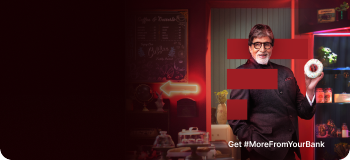
Savings Account
How can a Savings Account help build an emergency fund?
Key Takeaways
This article discusses the importance of establishing an emergency fund and how it can offer financial security and peace of mind.
Following practical tips for saving money, such as setting clear goals and automating savings, can make building this safety net more manageable.
An IDFC FIRST Bank Savings Account offers high interest rates, zero fees, and user-friendly features, making it ideal for efficiently growing your emergency fund.
We’ve all had moments when life throws a financial curveball - an unexpected medical bill, sudden car trouble or a gap between jobs. These moments can be stressful and difficult to manage, especially if you're unprepared. That’s where having a financial safety net makes all the difference.
A financial safety net is money set aside to protect you during life’s unexpected challenges. At the heart of this safety net is your emergency fund - a dedicated reserve designed specifically to help you cover unforeseen expenses without derailing your financial goals or going into debt.
The good news? Building your financial safety net isn’t complicated. With the right savings account, like the one offered by IDFC FIRST Bank, you can start securing your financial future today.
Let’s explore how to build your safety net, starting with an emergency fund.
READ MORE
How to build a financial safety net with an emergency fund
A simple and effective way to create your safety net is by opening a dedicated savings account and consistently setting aside money into it. Here’s how to do it.
1. Open a dedicated emergency fund account
Keep your emergency fund separate from your everyday funds to avoid accidental spending. An excellent choice for this is the IDFC FIRST Bank Savings Account, offering:
- Up to 7% p.a. interest, helping your funds grow faster
- Zero charges on all savings account services
- A user-friendly digital platform for easy access and management
2. Automate your savings
Build your emergency fund effortlessly by following these tips:
- Set up automatic transfers from your main account to your emergency fund account on payday
- Treat these transfers like a non-negotiable monthly expense
This simple habit ensures your financial safety net grows steadily.
3. Monitor and manage your cash flow
Use your savings account’s features to:
- Track deposits and withdrawals
- Adjust spending habits to free up extra savings
- Deposit bonuses, gifts or tax refunds directly into your emergency fund
Smart money habits: Cut expenses and follow money-saving tips
A strong safety net isn’t just about saving more - it’s about spending wisely. This is where adopting reliable money-saving tips can make a real difference:
- Track expenses to know where every Rupee goes
- Set a monthly budget and stick to it
- Save before you spend
- Review subscriptions and cancel what you don’t use
- Cut back on takeaways and deliveries
- Use cashback and rewards to maximise every transaction
- Cut down on impulse buys and non-essential purchases
- Try to save on groceries and essentials
- Plan no-spend days to challenge yourself weekly
- Use public transport or carpool
- Shop during sales and buy only what you need
- Negotiate bills to lower phone, internet, or rent costs
- Set clear financial goals since saving is easier with a purpose
Even small adjustments can make a big difference over time.
What about sinking funds?
While your emergency fund is for unforeseen expenses, it’s also smart to set up sinking funds - dedicated savings for planned or predictable costs.
Think annual insurance premiums, home maintenance, festive gifts or a future holiday. By setting aside a small amount regularly in advance, you avoid disrupting your emergency fund or taking on debt when these expenses arrive.
You can create multiple sinking funds within your savings account or track them digitally to stay organised. It’s another practical approach when planning how to manage money better and reduce financial stress.
Why a financial safety net matters
Building a financial safety net isn’t optional - it’s essential. Here’s why:
- Protects your financial stability during emergencies
- Prevents debt by reducing the need for high-interest loans or credit cards
- Provides peace of mind, letting you focus on life without financial worry
- Supports smarter investment decisions, knowing you have a backup fund in place
How much should you save in your emergency fund?
A good rule of thumb is to save three to six months’ worth of essential expenses. For example, if your monthly expenses are ₹50,000, your emergency fund should hold ₹1.5–3 lakhs.
Adjust this amount based on your job stability, dependencies, and financial responsibilities.
Why choose IDFC FIRST Bank for your financial safety net?
With competitive interest rates, zero fees on all savings account services, and seamless digital banking, IDFC FIRST Bank makes it simple to build and manage your emergency fund. Key benefits include:
- Up to 7% p.a. interest on your savings, calculated daily and credited monthly
- Zero fees on essential services
- Unlimited ATM withdrawals
- User-friendly mobile and internet banking
- 24X7 customer support via phone and WhatsApp
- Recognised among the World’s Best Banks 2025 by Forbes in partnership with Statista
Whether you need financial help during an emergency or are planning for your future, a strong emergency fund gives you the flexibility and peace of mind to stay in control.
Secure your future today
A financial safety net isn’t a luxury - it’s a necessity. Start building yours today with a dedicated emergency fund and give yourself the freedom to face life’s surprises with confidence.
Open your IDFC FIRST Bank Savings Account now and take your first step toward lasting financial security.
Frequently Asked Questions
Can I use my emergency fund for planned expenses?
No. An emergency fund should be reserved strictly for unforeseen, urgent expenses and not for planned or discretionary spending.
What if I don’t have a steady income? How do I save for an emergency fund?
Start by saving small, manageable amounts whenever possible. Prioritise building your emergency fund even with irregular income by automating savings when cash is available.
Should I invest my emergency fund to earn higher returns?
No. Your emergency fund should be liquid and easily accessible. Investing it in volatile instruments risks losing access to funds when you need them most.
Disclaimer
The contents of this article/infographic/picture/video are meant solely for information purposes. The contents are generic in nature and for informational purposes only. It is not a substitute for specific advice in your own circumstances. The information is subject to updation, completion, revision, verification and amendment and the same may change materially. The information is not intended for distribution or use by any person in any jurisdiction where such distribution or use would be contrary to law or regulation or would subject IDFC FIRST Bank or its affiliates to any licensing or registration requirements. IDFC FIRST Bank shall not be responsible for any direct/indirect loss or liability incurred by the reader for taking any financial decisions based on the contents and information mentioned. Please consult your financial advisor before making any financial decision.
The features, benefits and offers mentioned in the article are applicable as on the day of publication of this blog and is subject to change without notice. The contents herein are also subject to other product specific terms and conditions and any third party terms and conditions, as applicable. Please refer our website www.idfcfirstbank.com for latest updates.
